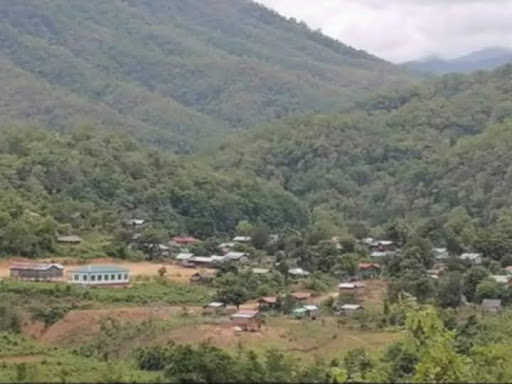PHAIKHUA
Phaikhua village was founded in 1895 by two brothers, Mr. Van Dul and Ral Hei, sons of Za Hnawk, the chieftain of Congthia village. They were joined by Ni Vung, Thawng Hnin, Tei Cawn, and Khua Hram from Buanlung village, as well as Cia Hrang and Khen Kar from Leitak village. Within a few years, Ceu Ling, Thio Tum, and Thang Tluang from Congthia village along with Do Hmung, Kip Sang, and Ui Hram from Leitak, moved to Phaikhua and settled there. Today the village is home to 70 households and 375 people. The villagers originally spoke three dialects: Buanlung (Senthang), Congthia (Halkha), and Leitak (Zophei). After three generations, Buanlung dialect became the common language and is now considered the Phaikhua dialect.
The villagers primarily relied on shifting cultivation for survival, with most of the fields located in hilly areas. There are 11 paddy fields ( Tlanglo pil) in tropical area, named:
1. Vanputlak. 7. Farsang
2. Lianpenlung. 8. Saihaphoinak
3. Rualang. 9. Mangheilo
4. Sihpi. 10. Chuahkhenpa
5. Bualpi. 11. Vuilo
6. Meisahleu
In the sub-tropical area, there are 8 cornfields (Lailo pil):
1. Lungtawl. 5. Inthlanglo
2. Sihpi. 6. Lungaihniar
3. Bualpi 7. Ngaldumnak
4. Anhmawngdong 8. Lungbunh
In the colder hilly areas, there are 6 cornfields (Zolo pil):
1. Uilohnak. 5. Lungaihniardong
2. Khuaicung. 6. Hriphiva
3. Ngalkahnak
4. Bungrawn
After Christianity was introduced to the village in 1938, the first convert, Mr. Pa Rang, along with other converts namely Har Bawm and Hram Vai, began cultivating the paddy fields in the lowland areas known as “Leikuang” in Chin. At present, there are 150 acres of paddy fields in this lowland area. The village is surrounded by four rivers: The Anhmawng and Lungaihniar rivers to the south, the Thanghawr river to the north, and the Sazuksih river to the west. These rivers have help formed the lowlands, ideal for paddy cultivation.
The village is encircled by stunning mountains, such as Bawpatlang to the east, Asungpi to the south, and Lungngaitlang to the west. The peaks of Lungto and Thangrawn, rising 8,209 feet above sea level in the Bawipatlang mountain range, hold special significance for the villagers of Phaikhua. Before the arrival of Christianity, the villagers had worshipped these mountains, offering a pig as a sacrifice each year.






